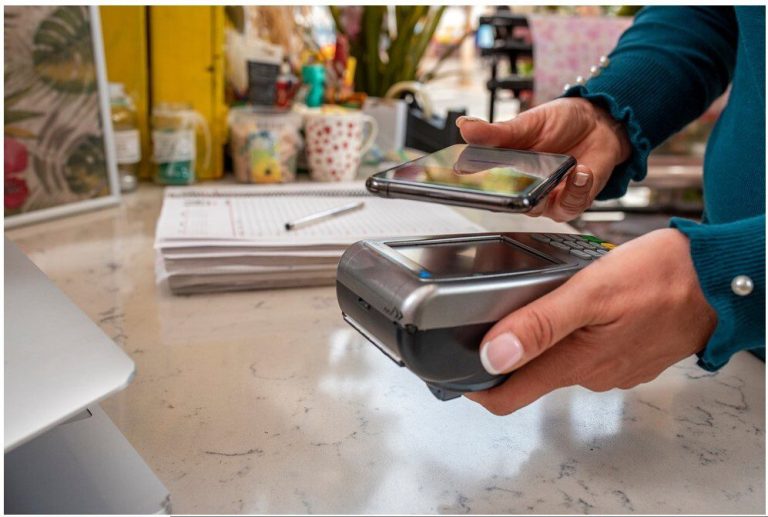
In payments, great ideas are sometimes just ahead of their time.
People aren’t keen on embracing new ways of transacting. Or the technology isn’t ready, may not be easy to scale, or it’s too expensive to deploy.
And, then, as time goes on, sometimes the stars align.
Alex Gonthier, the serial FinTech founder, payments innovator and investor who’s pretty much seen it all, told PYMNTS’ Karen Webster that Pay by Bank is ready to cement its place as an alternative to credit cards, building on top of the payments foundations he’s been architecting as far back as the mid-1990s.
And — as he noted to Webster — through it all, he’s had a vision for how payments can be done faster and more securely using a payment method that billions of consumers and enterprises have: the bank account.
As of late October, Gonthier has returned as CEO to Trustly Inc., the North American division of Trustly Group. A circuitous path has taken him across the globe and that has seen him help shape dozens of payments firms.
“This is my 15th tech startup,” he said of Trustly, “and I have six ‘exits’ and three IPOs under my belt.”
Long and Winding Road
Back in the late 1990s, as CEO and co-founder of iPIN, he helped establish online banking payments as a category, allowing direct carrier billing through the use of IP addresses. iPIN was funded in part by Wells Fargo, and along with HSBC, the banks went live with the first open banking payments platform.
Later he was the CTO of mobile payments company Paymo, which merged with Boku, and the CEO of Ticketscript, which became part of Eventbrite. Beginning in 2011 in New York, he incubated and founded PayWithMyBank — which merged with Trustly in 2019 — and began to build a transatlantic payments platform that focused on connecting bank accounts through debits rather than credit transfers.
With that history, “’I’m actually the inventor of open banking payments, and the whole industry,” he told Webster.
In its present incarnation, Trustly enables users to initiate payments on any device by signing in to online banking with a FaceID or traditional usernames and passwords. Transactions are completed without leaving the merchant’s site or app.
High Awareness of Bank Transfers
There’s a significant runway for paying for purchases directly from a checking account through an online bank transfer to gain traction in the United States.
PYMNTS’ own research shows that 30% of consumers are interested in trying new payment methods. As detailed in the report “New Ways To Pay: Aligning Consumer And Merchant Payment Preferences,” PYMNTS and Nuvei found that two-thirds of consumers who are interested in trying new payment methods are “very” or “extremely interested” in using online bank transfers. While 37% of consumers overall had used the method to pay a bill in the preceding month, only one in 10 have used their accounts to pay a merchant.
Certain verticals, said Gonthier, are proving to be notably strong markets for Pay by Bank. One is sports betting (legalized by the Supreme Court in the U.S.), where card declines tend to be relatively higher than other verticals.
“We are the number one payment method in this space, with the right product at the right time and in the right place,” he said.
The enterprise segment (including telecom carriers), which is biller oriented, also has been a strong market, and so have insurance and tuition payments. Trustly powers the billers, lowers their operational costs and appears on the “payment lineup” of a biller’s web site or app, Gonthier added.
Getting the Merchants on Board
Trustly is training its sights on eCommerce more fully, said Gonthier: “We’re looking for sites or services that have a high repeat usage,” and where transaction values may be lower — delivery services and groceries are key areas.
Within those transactions, there’s incentive for merchants to switch to and encourage bank transfer payments, as they can avoid swipe fees and boost margins in the interim (or use the funds for rewards and other loyalty programs).
The infrastructure is in place to help bank transfers go mainstream, especially as real-time payments volume is projected to quadruple through the next few years. Open banking is about connectivity, and Gonthier said that Trustly has real-time visibility into accounts, with strong security in place.
Looking ahead, the stars are aligning for open banking payments to become an ever-clearer alternative to cards, especially as debit is a preferred payment method in Europe. Gonthier cited strong adoption in Northern Europe and in Australia. There’s also potential for widespread use of bank transfers in countries where interchange fees are not regulated, such as Japan.
In the U.S, he said there’s potential to bring an almost-BNPL functionality to bank transfers through what he called “check extenders.”
“It’s not lost on us, if you look at paper check usage in retail, they’re still around the 13/14 and the 29/30th of the month,” he said. In the case of the extender, the settlement is done at the time of bank transfer transaction but three days later. Call it a form of overdraft protection but without fees.
“For 25 years,” he said, “I’ve been focused on the same consumer and the same problem: How to pay in a way that’s simple. Pay by bank is just a question of connectivity, online, over the Internet — it works anywhere.”